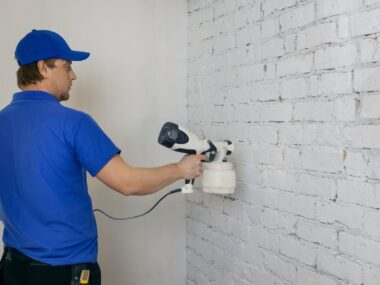When it comes to painting a room, there are a few things to keep in mind in order to get the job done quickly and efficiently. First, it is important to have all of the necessary supplies on hand before getting started. This includes paint, brushes, drop cloths, and tape. Once everything is gathered, the next step is to prep the room. This means removing all furniture from the area, as well as outlet covers and light switch plates. Next, any cracks or holes in the walls should be filled in with spackle or joint compound.
Once the prep work is done, the actual painting can begin. It is best to start with the ceiling, then move on to the walls. When painting the walls, it is important to use long strokes in order to avoid leaving brush marks. Lastly, the trim should be painted last. Once the paint is dry, all that is left to do is put the room back together and enjoy the new look
How long does it take paint to dry on walls
Most types of paint will take about two hours to dry on walls. However, the actual amount of time may vary depending on the type of paint and the thickness of the application. For example, latex paint is typically quicker to dry than oil-based paint, and a thin layer will dry more quickly than a thick one. In addition, the temperature and humidity of the room can also affect drying time.
For best results, try to paint in a cool, dry space with good ventilation. If possible, open a window or turn on a fan to help circulate air while the paint dries. With a little patience, your fresh coat of paint will be ready to enjoy in no time.
Choose the right paint
Not all paint is created equal. When it comes to painting a room quickly, it is important to choose the right type of paint for the job. For instance, latex paint is typically easier to work with than oil-based paint. It dries more quickly and is less likely to drip or leave brush marks. However, oil-based paint usually provides a more durable finish.
Another thing to keep in mind is the paint sheen. A higher sheen will result in a shinier surface, while a lower sheen will have a more matte finish. Glossy finishes are typically easier to clean, but they can also show imperfections more easily. If you’re not sure which sheen to choose, a semi-gloss or eggshell finish is usually a good middle ground.
Tape off the room’s borders
Taping off the edges of a room before painting is crucial for achieving clean, straight lines. To save time, use painter’s tape to quickly and easily mask off baseboards, door frames, and window trims. For best results, try to avoid using duct tape or other types of tapes that may leave behind a sticky residue.
Paint the ceiling first
One of the best ways to speed up the painting process is to start with the ceiling. Not only will this help you avoid getting paint on your walls, but it will also give you a chance to get any drips or mistakes out of the way early on. Once the ceiling is complete, move on to painting the walls.
Another painting tip to keep in mind is to use long strokes. This will help you avoid leaving brush marks and will also minimize the amount of time spent painting. When working on the walls, start at the top and work your way down. For the best results, try to use a paint roller instead of a paintbrush.






